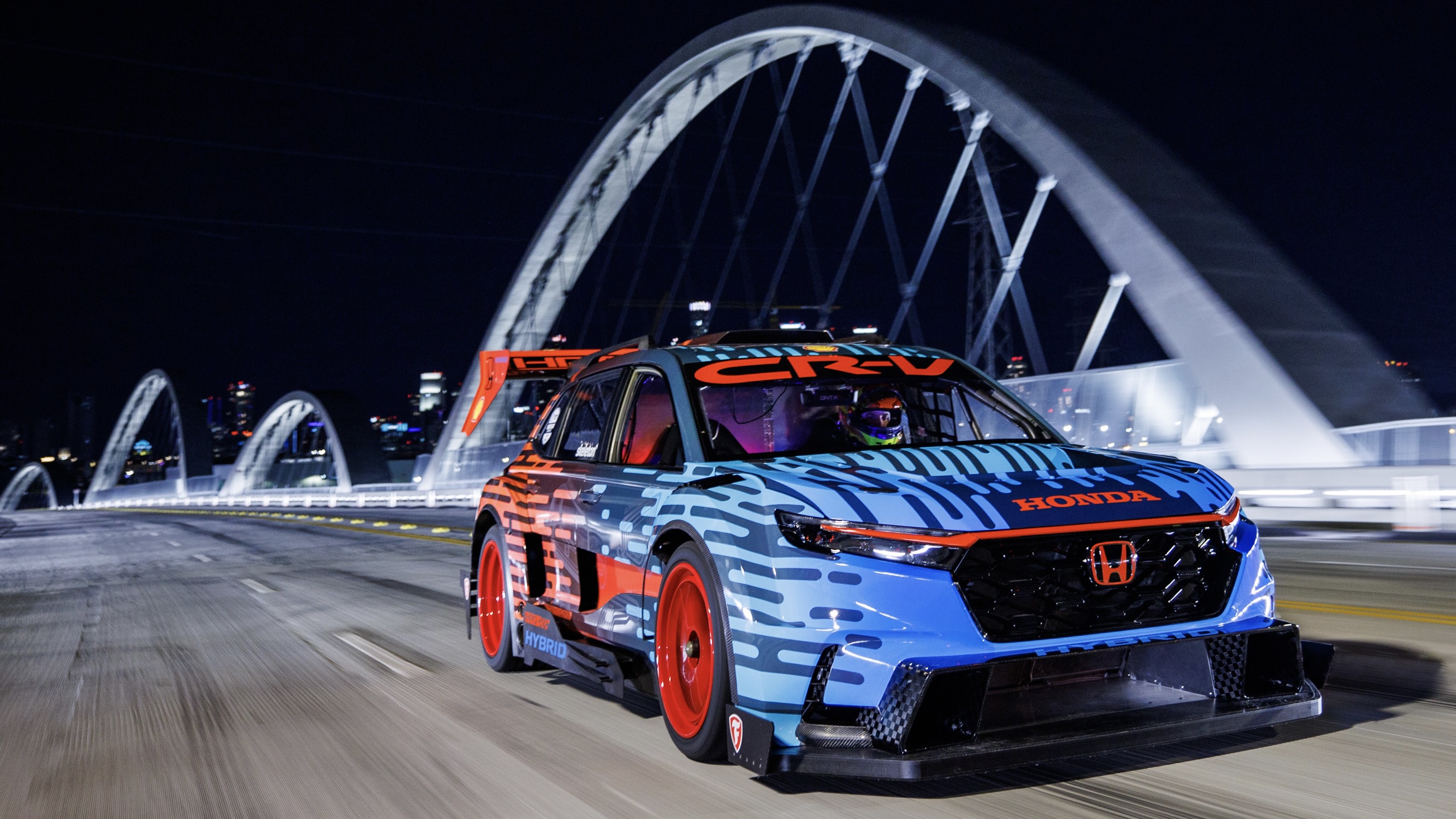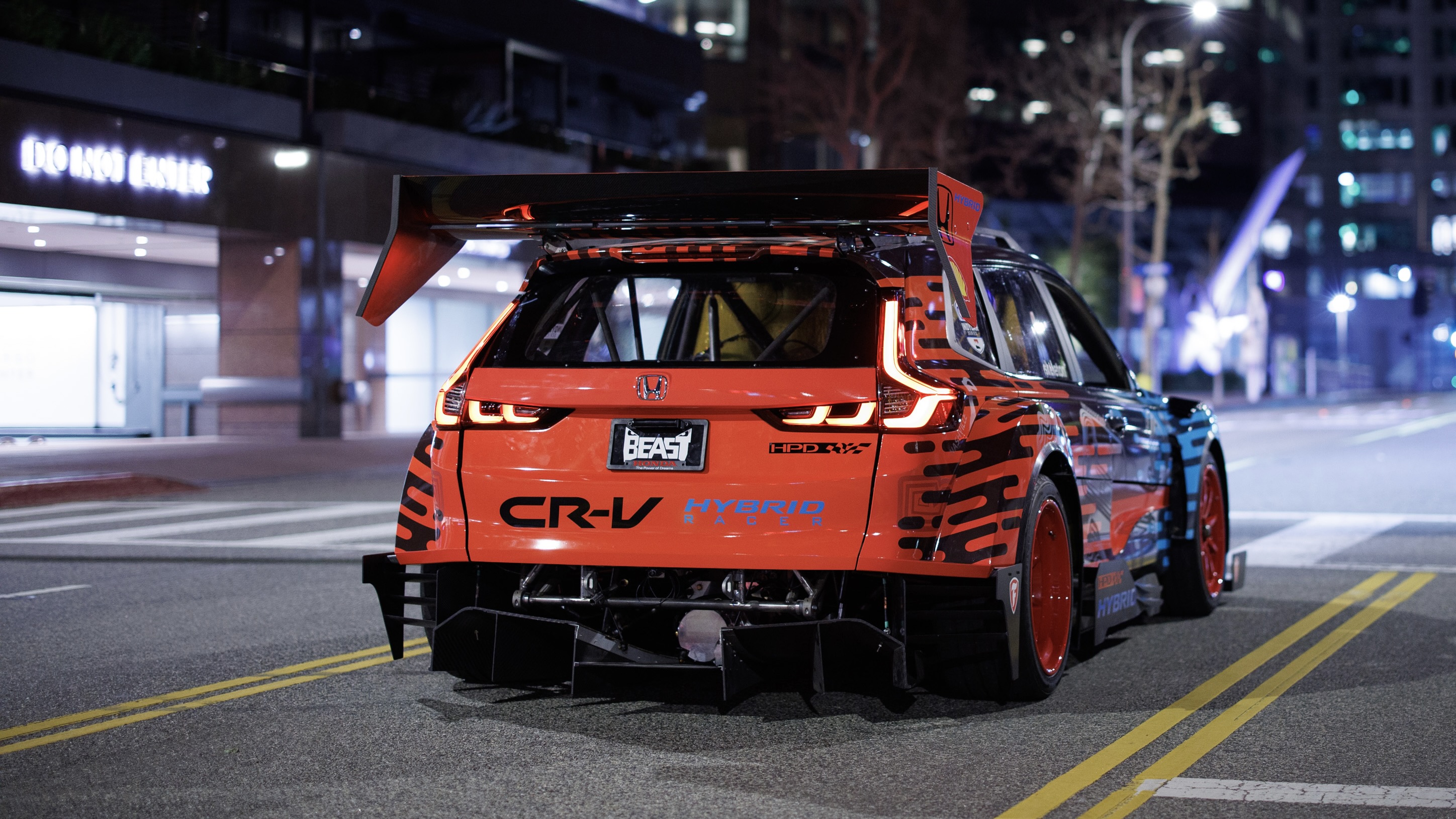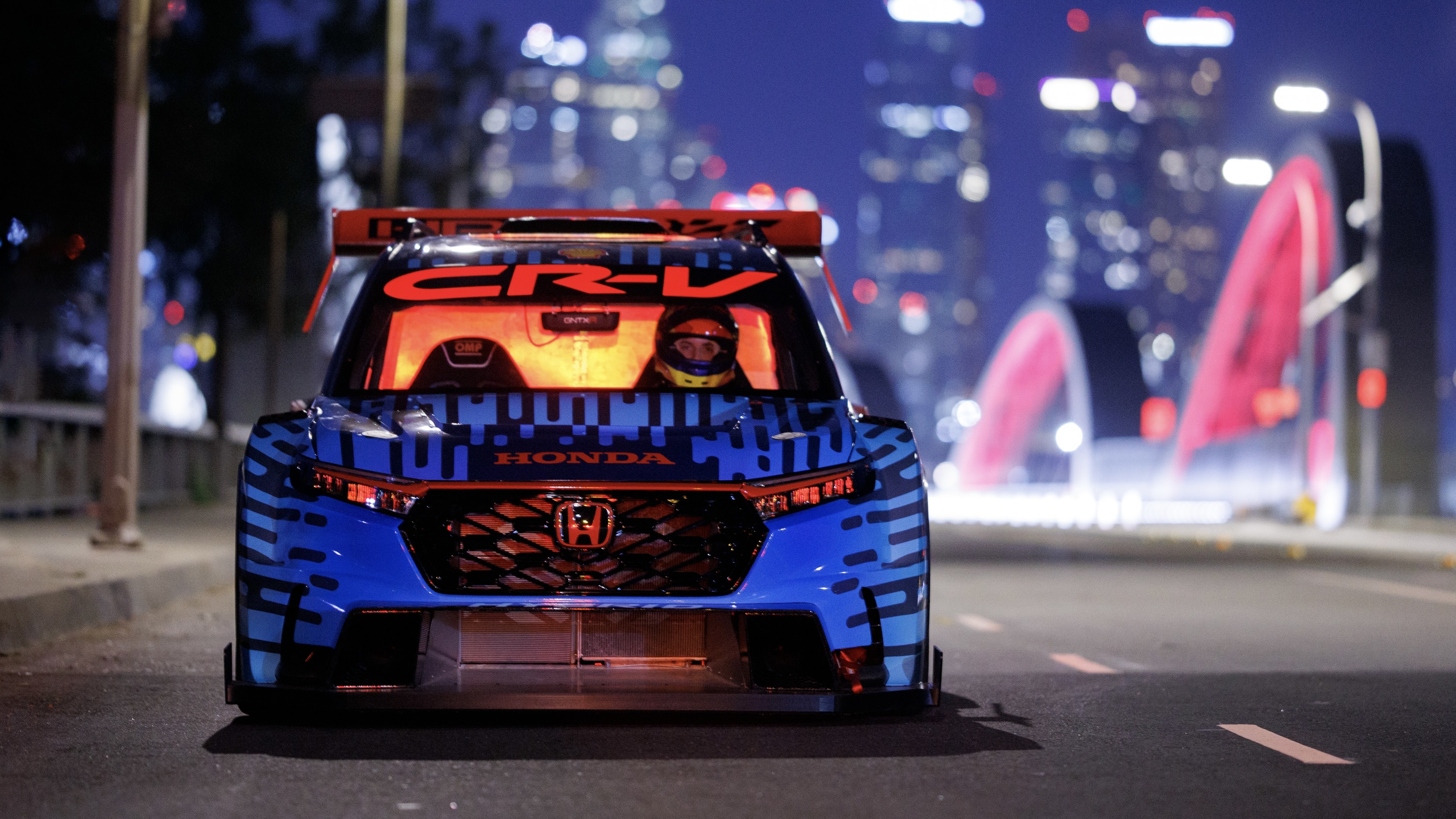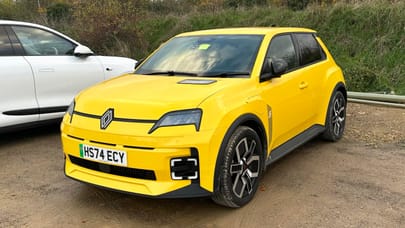
This Honda CR-V is a twin-turbo nutter that sounds like an IndyCar
And there’s a good reason for that...
The Honda CR-V is no one’s idea of a good time. A perfectly fine car, of course (barring the obvious impediment of being an SUV), but one that also verges on terminal tedium. At the risk of digressing already, having a dig at a car that’s made to be sensible, reliable family transport for being boring is like criticising a Cessna for being a rubbish submarine. But we... well, you know.
In any case, this particular CR-V has clearly been built to be an antithesis to every single facet of the CR-V. Practicality? It can go hang. School run ability? Erm, no – there’s quite a bit of space frame – and an entire engine – where the rear seats used to be. Reliability? Well, sure – provided you have a team of mechanics on hand who know how to keep a 2.2-litre, twin-turbo hybrid V6 plucked from an IndyCar in fine fettle. Otherwise, this one might be beyond your average mechanic’s remit.
A few hurdles to daily driving aside (and the small matter that this is a one-off built by Honda, and you’d have an easier time trying to buy the moon), there are some serious upsides to this new CR-V equation. Some 800 horsepower’s worth of upsides, apparently, delivered courtesy of the aforementioned IndyCar engine and a special fuel blend that Shell calls ‘100 per cent renewable’... we’ll be the judge of that, thanks.
Instead of batteries, the hybrid system feeds a pair of supercapacitors, which can then fire electrons into the electric motor whenever the driver asks for it by pushing a button. The benefit of capacitors in this case (and indeed in IndyCar) is that they’re lighter and can deliver energy more quickly than a battery. So why not use them in all electric cars? Well, long story short, capacitors can store and deliver charge more quickly, but the batteries can store more energy per weight overall. In practice, it offers an electric push-to-pass feature. In a CR-V. With 800bhp.
Keeping this torrent of power sources in some sort of shape is really down to the fact that there’s quite a bit of regular CR-V missing from this picture. Quelle surprise, et cetera. Everything from what Americans would called the ‘beltline’ up – windows, windscreen, sunroof and the metalwork that holds them in – is apparently standard CR-V. Everything else? Well, there’s a space frame chassis, the front suspension and brakes from an NSX GT3, the rear suspension from a Dallara IndyCar (insider tip: Dallara makes all the IndyCar chassis) with custom Brembos to fit. Xtrac handles the gearchanges, McLaren supplies the engine control unit and Honda’s North American racing arm supplies the IndyCar-ready powertrain.
It’s a pretty special bit of kit, all things considered. But even more special is that this might be the first time a CR-V was anyone’s idea of a good time...
Top Gear
Newsletter
Thank you for subscribing to our newsletter. Look out for your regular round-up of news, reviews and offers in your inbox.
Get all the latest news, reviews and exclusives, direct to your inbox.
Trending this week
- Car Review
BMW 1 Series
- Top Gear's Top 9
Nine dreadful bits of 'homeware' made by carmakers










